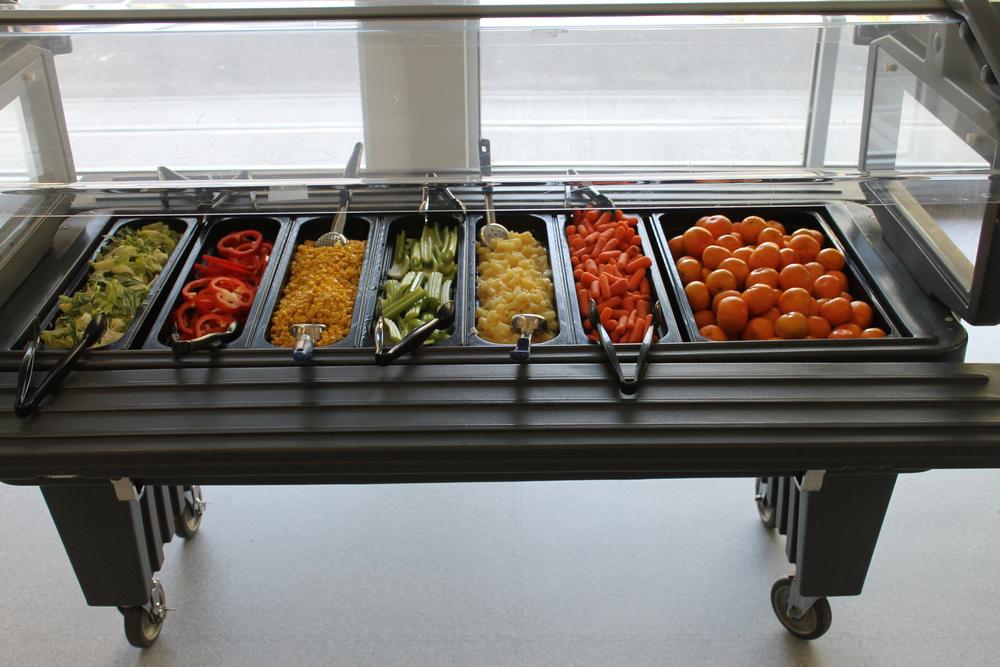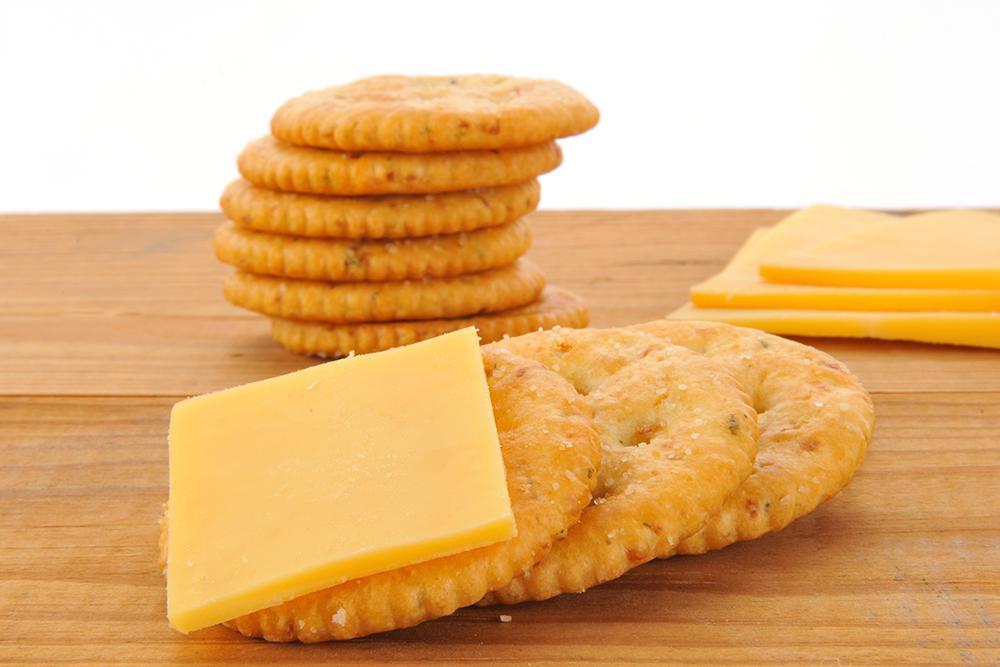 When you think of muscle growth and the nutrients required, protein is probably the first nutrient that comes to mind. But there’s more to growing strong muscles than simply eating a lot of protein. With young athletes in particular, there are a few important things to keep in mind if you’re trying to help them boost muscle mass or even simply maintain it.
When you think of muscle growth and the nutrients required, protein is probably the first nutrient that comes to mind. But there’s more to growing strong muscles than simply eating a lot of protein. With young athletes in particular, there are a few important things to keep in mind if you’re trying to help them boost muscle mass or even simply maintain it.
Here, TrueSport Expert Kristen Ziesmer, a registered dietitian and board-certified specialist in sports dietetics, shares her favorite recipes that make it easy for your young athlete to get the nutrients they need to support muscle growth. But before we get into the simple recipes, there are a few important reminders parents should keep in mind when it comes to preparing meals for growing athletes:
- Protein is key to muscle growth. The protein intake range for teens is going to be about 1.35 to 1.6 grams of protein per kilogram of body weight per day. So, a 120 pound athlete would need between 73 and 87 grams of protein per day, while a 150 pound athlete would need between 92 and 109 grams per day. A typical serving size—roughly a palm of a protein-dense food like tofu or chicken—provides around 20 grams.
- Complete proteins are critical. You likely know that protein is going to be critical for growing muscles, but did you know that some proteins, especially vegan or vegetarian ones, are incomplete? Your athlete needs the full range of amino acids that build a complete protein, and while most animal products (meat and eggs) are complete proteins, many vegan sources like beans and legumes need to be combined with another ingredient like brown rice to make up the full range of necessary amino acids—particularly leucine—for muscle growth.
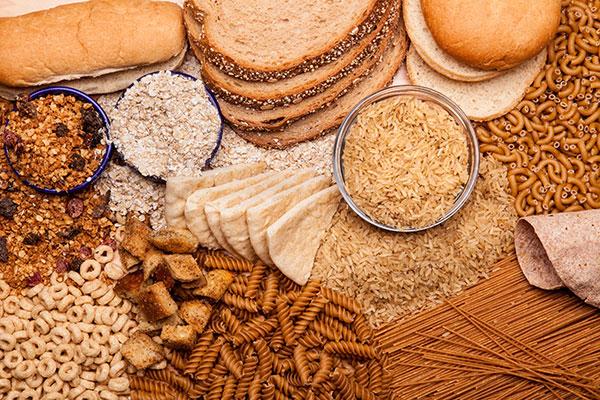 Athletes need carbohydrates to encourage muscle growth. “Carbohydrates help to build muscle and I don’t think a lot of people really realize that,” says Ziesmer. “In fact, 50 percent of an athlete’s diet should come from carbohydrates. But quality matters! Whole grains and fruits and vegetables and beans are ideal.” (With carbohydrates, a fist-sized amount is roughly a serving.)
Athletes need carbohydrates to encourage muscle growth. “Carbohydrates help to build muscle and I don’t think a lot of people really realize that,” says Ziesmer. “In fact, 50 percent of an athlete’s diet should come from carbohydrates. But quality matters! Whole grains and fruits and vegetables and beans are ideal.” (With carbohydrates, a fist-sized amount is roughly a serving.)- Vitamin D is a critical vitamin in building muscle mass, and Ziesmer notes that many people are surprisingly deficient in it, especially if you live in a northern climate or aren’t outside in the sun often (sports like swimming or wrestling tend to mean less time outside). She recommends getting vitamin D levels checked by a doctor before using supplements, but adding foods that are fortified with vitamin D (certain milks and yogurts, fatty fish) is a good idea regardless.
- Look for meals that allow athletes to dial in their own serving sizes. The meals we’ve listed below are ideal not just because of their ingredients, but because an athlete (or parent) can increase or decrease portion sizes depending on their activity levels. With that in mind, don’t assume your athlete should eat the same amount as you, Ziesmer cautions. She often sees athletes under-fueling because a parent is on a diet and serving the whole family portions that are too small or skipping critical macronutrients like fat or carbohydrates.
Recipes
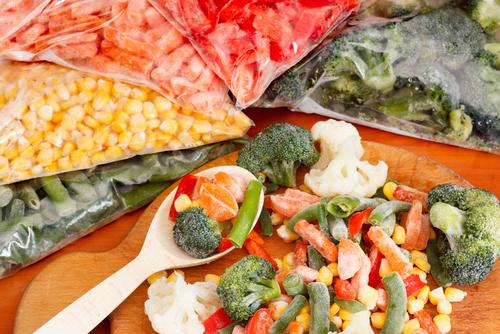 Here are three simple recipes that can be prepared quickly. Feel free to double up on ingredients to create leftovers for lunch or to freeze for busier weeks when it’s hard to make time to cook. These recipes should serve 4-6 people, depending on hunger levels. We’ve also tried to keep ingredients simple and relatively inexpensive: Canned and frozen vegetables are a busy chef’s best friend!
Here are three simple recipes that can be prepared quickly. Feel free to double up on ingredients to create leftovers for lunch or to freeze for busier weeks when it’s hard to make time to cook. These recipes should serve 4-6 people, depending on hunger levels. We’ve also tried to keep ingredients simple and relatively inexpensive: Canned and frozen vegetables are a busy chef’s best friend!
With all these options, allow your athlete to build their own rather than serving them. This lets your athlete add extra protein if they’re feeling hungry and affords them some independence. This is especially helpful for older athletes who will be dealing with the buffet line in college dining halls soon!
And of course, these recipes are just simple starting points for the culinarily-inclined. You can get creative by changing flavor profiles with new spices and sauces, trying new options for rice or grains, and mixing up the proteins. For example, a burrito bowl made with ground beef with salsa and guacamole over rice isn’t that different from making the same bowl with salmon instead of beef, but the flavor profile changes completely.
Three bean chili
Ingredients:
- 1 can black beans
- 1 can white beans
- 1 can chickpeas
- 1 large can stewed, diced tomatoes
- 1 can of pureed tomatoes
- 1/2 cup chopped yellow onion (can purchase chopped onion frozen as well)
- 1/2 bag fresh or frozen spinach
- 1-2 cups of any favorite chopped vegetables your athlete prefers: Carrots, peppers, mushrooms, and broccoli are all great options and can be used fresh or frozen
- 5 tablespoons chili powder or chili seasoning
- 2 cups brown rice or quinoa
- Optional: Ground beef, shredded chicken, or vegan alternative
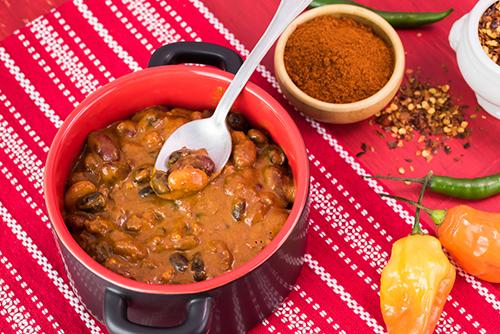 Toppings: Fresh chopped tomatoes, cilantro, sliced avocado or guacamole, cheddar cheese, plain Greek yogurt (a great protein-rich alternative to sour cream), tortilla chips
Toppings: Fresh chopped tomatoes, cilantro, sliced avocado or guacamole, cheddar cheese, plain Greek yogurt (a great protein-rich alternative to sour cream), tortilla chips
Directions:
- If using beef or chicken, sauté in pan until done
- Combine all ingredients except rice and toppings into pot or slow cooker
- Simmer on low for at least an hour on the stove, but ideally for several hours in a slow cooker for optimal flavor. Stir occasionally.
- Make rice separately
- Allow athletes to build their own chili, with rice underneath and their desired toppings
Pasta with meat sauce
Ingredients:
- 1 jar of strained, crushed tomatoes (roughly 600 mL)
- 3 teaspoons oregano or Italian seasoning mix
- 1 cup chopped onion
- 1 pound ground beef
- 1/2 bag fresh or frozen spinach
- Whole wheat pasta (chef’s choice for noodle style)
Directions: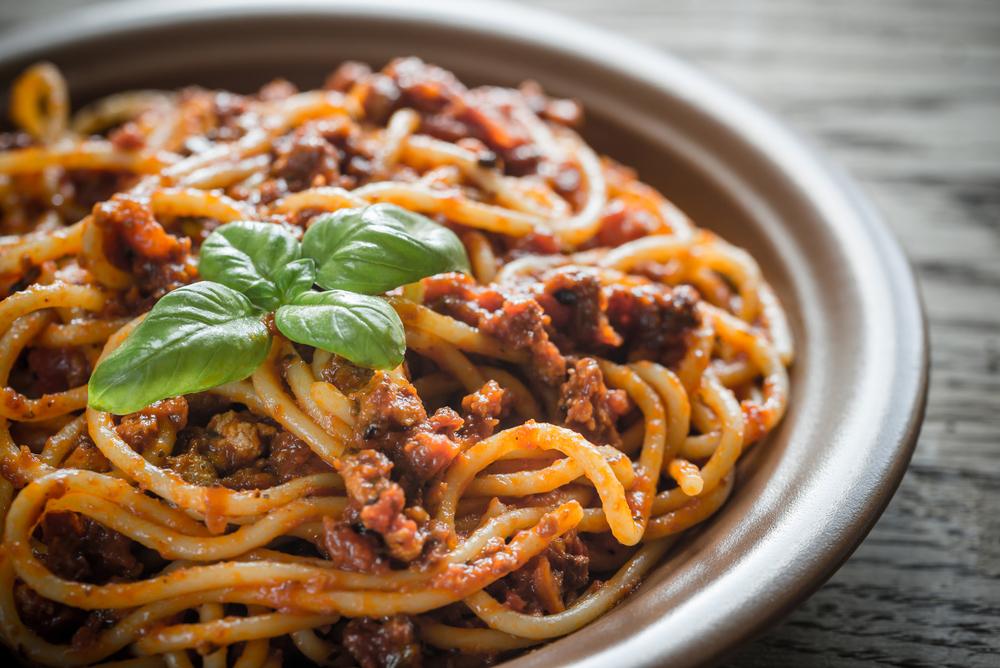
- Brown beef with chopped onions in pot, using a small amount of olive oil if using lean beef
- In a pot or slow cooker, combine all ingredients. Heat until bubbling, then reduce to simmer and cover. Stir occasionally. Ideally, simmer for 1.5-2 hours on stove top or 4-6 in slow cooker.
- Make pasta separately, being sure to add an extra serving size to the pot if your athlete is eating dinner after practice—it’s always better to have a bit leftover rather than scraping the bottom of the pot for one last strand of spaghetti!
Burrito bowl
Ingredients:
- 2 pounds ground beef, boneless skinless chicken thighs, or vegetarian meat substitute
- 1 large onion
- 2 bell peppers
- 1 bag spinach (or half bag frozen spinach)
- 3 tablespoons chili powder or burrito seasoning
- 2 cups brown rice or quinoa
- Olive oil
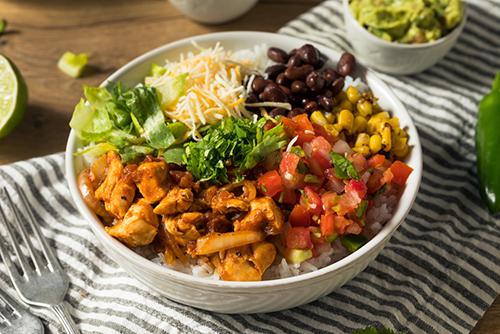 Toppings: Fresh chopped tomatoes, cilantro, sliced avocado or guacamole, cheddar cheese, plain Greek yogurt (a great protein-rich alternative to sour cream), tortilla chips
Toppings: Fresh chopped tomatoes, cilantro, sliced avocado or guacamole, cheddar cheese, plain Greek yogurt (a great protein-rich alternative to sour cream), tortilla chips
Directions:
- Cook rice or quinoa separately according to directions
- Brown beef or cook chicken in pan with olive oil, chopped onions, and chili seasoning
- If using beef, drain excess fat after browning
- If using chicken, chop into small pieces after it fully cooks
- Add chopped peppers and spinach to pan, sauté together until spinach is wilted and peppers soften
- Allow athletes to build their own bowls with rice, meat and vegetables, and the toppings that they prefer
____________________
Takeaway
For optimal muscle growth, make sure your athlete has access to as much food as they want at mealtime. A young athlete should be eating according to their hunger, not simply eating as much as you are. Prioritize a wide variety of protein and carbohydrate options at every meal. Keep meals simple, and allow athletes to ‘build their own’ plates, but ensure that the plate has at least a fist-worth of carbohydrate and a palm of protein.
